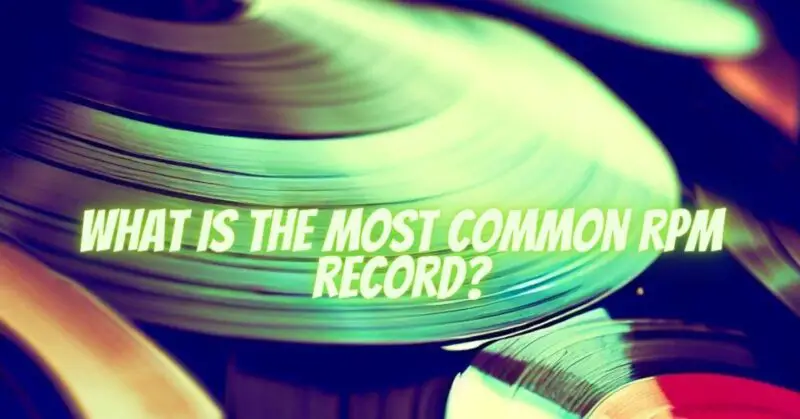Vinyl records have been a staple in the world of music for decades, captivating listeners with their warm analog sound and tangible appeal. When it comes to playback speeds, various options exist, but there is one particular revolution per minute (RPM) that stands out as the most common. In this article, we’ll delve into the world of vinyl records and uncover the most prevalent RPM speed, shedding light on its popularity and significance in the realm of music.
- 33⅓ RPM: The Reigning Champion
The most common RPM record is the 33⅓ revolutions per minute format, often referred to as “33 RPM” or simply “LP” (Long Play). Introduced in the late 1940s, the 33 RPM format quickly gained popularity and became the standard for playing full-length albums. These records allowed for a longer playing time per side, accommodating around 20 minutes of music on each side of a 12-inch vinyl disc.
- The Album Revolution
The rise of 33 RPM records was closely tied to the advent of the album format. Artists and record labels embraced this format, which provided an opportunity to present a cohesive collection of songs, allowing for artistic expression and thematic exploration. From iconic albums like The Beatles’ “Sgt. Pepper’s Lonely Hearts Club Band” to Pink Floyd’s “The Dark Side of the Moon,” the 33 RPM format became synonymous with the immersive and transformative album experience.
- Genres and Musical Diversity
The 33 RPM format catered to a wide range of musical genres, making it versatile and inclusive. Whether it’s rock, pop, jazz, classical, or folk, artists and labels released their music on 33 RPM records, allowing for a diverse sonic landscape. The format’s extended playing time per side facilitated the exploration of longer compositions, intricate arrangements, and immersive musical journeys, giving listeners a comprehensive and immersive experience.
- Technological Advancements
The emergence of stereo sound and technological advancements in recording and playback equipment further bolstered the popularity of the 33 RPM format. Stereo albums provided a richer and more immersive listening experience, captivating audiences with their spatial separation and depth of sound. Hi-fi (high fidelity) systems and advancements in turntable technology enhanced the fidelity and accuracy of 33 RPM records, solidifying their position as the go-to format for music enthusiasts.
- Enduring Legacy
Even with the advent of other playback speeds, such as 45 RPM for singles and 78 RPM for early records, the 33 RPM format has endured and remained the most common RPM record. Its prevalence continues to this day, as vinyl records have experienced a resurgence in popularity, with new releases and reissues still predominantly utilizing the 33 RPM format.
Conclusion:
Among the various playback speeds available for vinyl records, the most common RPM record is the 33⅓ revolutions per minute format. Its introduction revolutionized the music industry, providing a platform for full-length albums and allowing for a comprehensive artistic expression. The 33 RPM format remains synonymous with the album experience, accommodating a diverse range of musical genres and captivating listeners with its immersive sonic journey. Despite the passage of time, the enduring legacy of the 33 RPM format continues to shape the way we engage with and appreciate music on vinyl.


